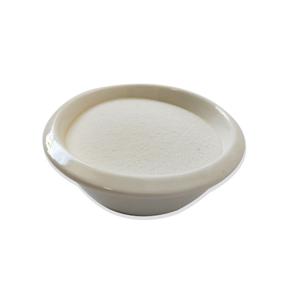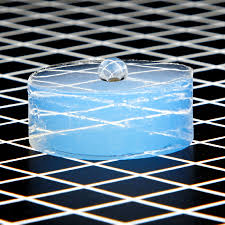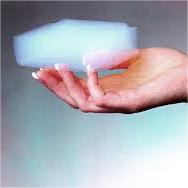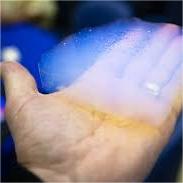Professional industry ceramic supplier, silicon nitride, silicon carbide, aluminum nitride and any other kinds of ceramics.
1. Introduction
Just 24 hours ago, a major semiconductor materials supplier announced a breakthrough in 8-inch silicon carbide (SiC) single-crystal ingot production, citing the use of custom-engineered silicon carbide crucibles as a key enabler. This development underscores a quiet but vital truth: behind every high-efficiency EV inverter or 5G base station lies an unsung hero—the silicon carbide crucible.

While most consumers associate silicon carbide with ceramic dinnerware or sanding discs, its most demanding—and lucrative—application is in the controlled growth of ultra-pure semiconductor crystals. This niche field demands materials that won’t contaminate molten silicon, withstand temperatures above 1600°C, and maintain structural integrity over repeated thermal cycles.
2. Why Silicon Carbide Crucibles Dominate Crystal Growth
2.1. Thermal Stability Meets Chemical Inertness
In the Physical Vapor Transport (PVT) method used to grow SiC crystals, raw silicon carbide powder is heated to sublimation in a sealed graphite chamber. Here, a silicon carbide crucible isn’t just a container—it’s a reactive boundary that must resist decomposition, outgassing, and interaction with vapor-phase species.
Unlike alumina (Al2O3) or zirconia (ZrO2) crucibles—which can introduce oxygen or zirconium impurities—silicon carbide crucibles share the same base chemistry as the material being grown. This minimizes contamination and promotes high crystal quality, essential for reducing defects in power devices.
2.2. Outperforming Alternatives: Boron Carbide vs Silicon Carbide

Some might wonder: what about boron carbide vs silicon carbide? While boron carbide (B4C) boasts higher hardness, it’s far more expensive, harder to machine, and prone to boron contamination in SiC melts. Silicon carbide strikes the ideal balance of purity, thermal conductivity, and manufacturability for this specific use.
Moreover, silicon carbide crucibles can be fabricated in complex geometries—like tapered liners or multi-zone designs—that optimize vapor flow during crystal growth, something brittle alternatives struggle to achieve.
3. Advanced Ceramics in the Ecosystem
3.1. Silicon Nitride’s Supporting Role
Though silicon carbide crucibles lead in the melt zone, other advanced ceramics like silicon nitride (Si3N4) play supporting roles. For instance, silicon nitride ceramic components—such as silicon nitride rings, plates, or custom silicon nitride heat shields—are often used in insulation layers or support fixtures due to their excellent thermal shock resistance.
However, silicon nitride crucible factories typically serve different markets (e.g., molten metal handling), as Si3N4 decomposes in the reducing, high-temperature atmosphere of SiC crystal growth. Thus, while both are advanced ceramics, their applications rarely overlap in this context.

3.2. Complementary Components: Tubes, Discs, and More
The crystal growth furnace also relies on other silicon carbide-based parts:
- Silicon carbide thermocouple protection tubes shield sensors from corrosive vapors.
- Silicon carbide ceramic tubes for furnace insulation maintain thermal gradients.
- Silicon carbide discs and porous ceramic tubes help manage gas flow and pressure.
Even silicon carbide ceramic columns or rbsic silicon carbide tile blocks may form part of the furnace’s structural lining, thanks to their load-bearing capacity at high temperatures.
4. Beyond Semiconductors: A Word on Consumer Misconceptions
A quick online search reveals hundreds of listings for ‘silicon carbide ceramic baking dish’, ‘silicon carbide dinner ceramic plates’, or ‘silicon carbide ceramic butter dish’. While visually striking, these consumer items rarely contain true structural silicon carbide. Most are glazed porcelain or stoneware with a marketing-inspired name—true silicon carbide ceramics are too expensive and brittle for everyday tableware.
Similarly, products like ‘silicon carbide ceramic disc taps’ or ‘silicon carbide ceramic piping’ often refer to silicon carbide-reinforced composites, not monolithic SiC. The real industrial value of silicon carbide lies in extreme environments—not kitchenware.
5. The Future: Purity, Scale, and Innovation
As demand for SiC-based power devices surges—driven by EVs, renewable energy, and data centers—crucible manufacturers are racing to produce larger, higher-purity silicon carbide crucibles with longer lifespans. Recent advances include:
- Ultra-low impurity grades (<1 ppm metals)
- Recrystallized silicon carbide (ReSiC) and reaction-bonded silicon carbide (RBSiC) variants for improved thermal cycling
- AI-optimized crucible shapes to reduce crystal defects
These innovations ensure that the humble silicon carbide crucible remains at the heart of the semiconductor revolution.
6. Conclusion
From enabling gigawatt-scale inverters to shrinking 5G infrastructure, the silicon carbide crucible is a linchpin of modern power electronics. Its unique blend of thermal resilience, chemical compatibility, and structural reliability makes it irreplaceable in high-purity crystal growth—a niche where performance trumps cost, and material science meets real-world impact.
Our Website founded on October 17, 2012, is a high-tech enterprise committed to the research and development, production, processing, sales and technical services of ceramic relative materials such as Silicon. Our products includes but not limited to Boron Carbide Ceramic Products, Boron Nitride Ceramic Products, Silicon Carbide Ceramic Products, Silicon Nitride Ceramic Products, Zirconium Dioxide Ceramic Products, etc. If you are interested, please feel free to contact us.


